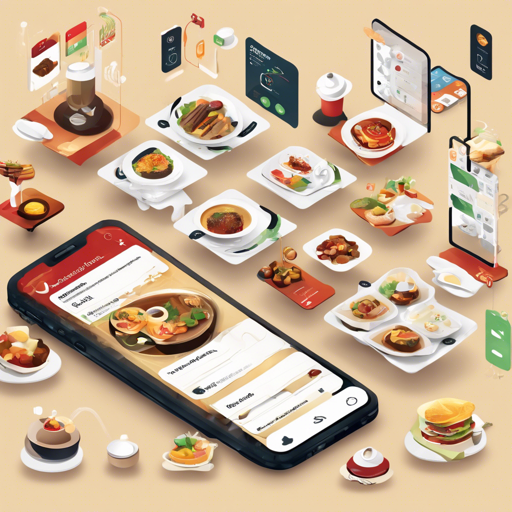Welcome to our step-by-step guide on developing a restaurant application designed to cater to the needs of both customers and staff. In this post, we’ll explore the core functionalities, offer troubleshooting tips, and ensure your development journey is pleasant and rewarding.
Understanding the Core Functionality
The restaurant application offers features that make dining experiences seamless and efficient. Let’s break it down into two main sections: user-centered and staff-centered functionalities.
User-Centered Features
- QR Code Reader: Customers can scan a QR code using their mobile phones to view the menu.
- Categories View: Displays different food categories.
- Product View: Shows detailed information about the products available.
- Ordering: Enables customers to place orders directly from their devices.
- Basket View: Allows customers to review their orders before finalizing.
Staff-Centered Features
- Staff Login (with Session): Ensures that only authorized staff members can access the application.
- Staff Logout: Allows staff to securely exit the application.
- Order Edit: Staff can modify orders as needed.
- Order Verification: Enforces a process to confirm orders before they are fulfilled.
- Order History: Keeps a record of all orders for reference.
- Desk Status Views: Provides visual status updates on table availability.
Code Example Explanation
While we won’t delve too deeply into the code, understanding the logic behind it will enhance your grasp of the application. Think of the application as a restaurant filled with multiple diners and a busy kitchen. Each section of the application interacts like the customers placing orders and the staff preparing meals:
- The QR Code Reader lets customers “announce” their presence and order desires to the restaurant, similar to a diner asking for the menu.
- The Ordering process is akin to a customer placing an order at the counter, ensuring the kitchen (staff) knows what to prepare.
- Staff functionalities like Order Edit are like chefs adjusting a dish based on customer feedback before it gets served.
- Lastly, Order History serves as the restaurant’s memory, reminding staff of past orders to maintain consistency in service.
Troubleshooting Tips
Even the best applications can run into issues. Here are some common problems and solutions:
- QR Code Scanning Issues: Ensure your camera permissions are enabled. If the QR code isn’t scanning, try cleaning the camera lens or using different lighting.
- Ordering Error: Double-check your input values; sometimes, little typos can cause big problems. If issues persist, refresh the app and retry.
- Staff Login Failures: If staff are unable to log in, verify the credentials and check for any session timeouts. Ensure your backend service is running.
- Order Edit Problems: Make sure you have the correct permissions to edit, and verify that the order exists.
For more insights, updates, or to collaborate on AI development projects, stay connected with fxis.ai.
Conclusion
At fxis.ai, we believe that such advancements are crucial for the future of AI, as they enable more comprehensive and effective solutions. Our team is continually exploring new methodologies to push the envelope in artificial intelligence, ensuring that our clients benefit from the latest technological innovations.
Project Resources
As you embark on this journey, consider utilizing the following resources to streamline your development process:

